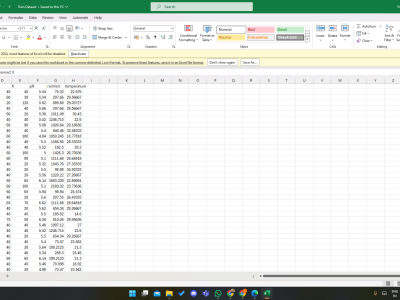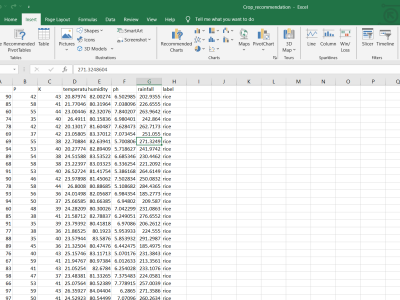Investigating potato production in the future by the EU-28 countries using sentinels and EU open datasets

- Citation Author(s):
-
Ozlem Ozalp (INFN)
- Submitted by:
- OZLEM OZALP
- Last updated:
- DOI:
- 10.21227/bsq3-w498
- Data Format:
- Links:
 508 views
508 views
- Categories:
- Keywords:
Abstract
ABSTRACT
Europe is covered by distinct climatic zones which include semiarid, the Mediterranean, humid subtropical, marine,
humid continental, subarctic, and highland climates. Land use and land cover change have been well documented in the
past 200 years across Europe1where land cover grassland and cropland together make up 39%2. In recent years, the
agricultural sector has been affected by abnormal weather events. Climate change will continue to change weather
patterns, for some regions, this will have a positive impact. For other regions, it will be negative. Hail, heavy rainfall,
floods, and droughts may lead to a reduction in agricultural land in some regions with an additional impact on
biodiversity. For that reason, major climatic and hydrological variables such as temperature, precipitation, vegetation
index, and soil moisture must be regularly monitored and the trends of their deviations from the normal must be
observed.
This research investigates the quantity of potato production in the future in two stages. In the first stage,
Autoregressive Integrated Moving Average (ARIMA)3 models are used for yield and soil moisture forecasting. The
models are trained on a dataset acquired in time series from the Soil Moisture and Ocean Salinity (SMOS)4 satellite
from 2010 to 2019 and are compared by statistics on potato production from EUROSTAT5 at the national scale. In the
second stage, the approach uses Support Vector Machine (SVM)6 architecture of Sentinel 2 Vegetation Index satellite
imagery together with weather and Sentinel 1 surface soil moisture information for the EU-28 member countries by
season 2018 for single potato fields. Agricultural statistical data such as crop calendar, map, production area, yield, and
acreage are collected from Eurostat while vector data collection from Land Use and Land Cover Survey (LUCAS)7 and
Land Cover from national to small scale agriculture (CORINE)8.
The ARIMA output performances measure Mean Squared Error (MSE) and Root Mean Squared Error (RMSE).
RMSE for soil moisture forecasting is 0.3792, 0.2816, 0.2679, 0.2110, and 0.1791 for East, West, South, North, and
Centre EU respectively. MSE for potato yield forecasting is 0.0954, 0.081, 0.0589, 0.0447, and 0.0199 for North,
Centre, East, South, and West EU respectively. The number of known crop field areas and the distance between them
are different for each country and this alters the dimension of the classification input. Two countries of EU-28 do not
contain information on potato location while the input dimensions of another two are too big to perform. Therefore, the
sensitivity analysis of SVM has been implemented for a total of 24 states. The classification accuracies for kernel Radial
Basis function are 98.53% in Austria, 99.39% in Centre of UK, 99.64% in Italia, 99.12% in Bulgaria and Greece,
99.43% in Sweden for Centre, West, South, East, and North EU, respectively, with the Sentinel Vegetation Index. The
classification accuracies change with the amount of ground-truth data. The results show that some geographical and
socio-economic biases like the chemical composition of the soil or the degree of automation in the agricultural sector
are influencing in the statistical analysis.
Instructions:
https://www.spiedigitallibrary.org/conference-proceedings-of-spie/11528/115280V/Investigating-potato-production-in-the-future-by-the-EU-28/10.1117/12.2574355.short?SSO=1







